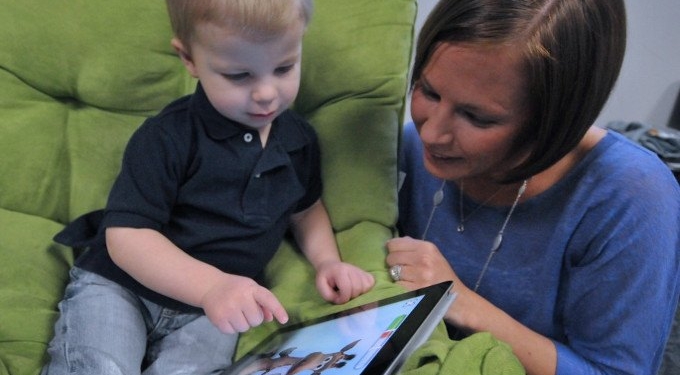
By Andrea Germanos | Common Dreams
The World Health Organization on Wednesday released guidelines on screen time for young children, recommending no “sedentary screen time” for one-year-olds and curbed access for older kids.
For the guidelines, the Washington Post reported, the “WHO drew on emerging—but as yet unsettled—science about the risks screens pose to the development of young minds at a time when surveys show children are spending increasing amounts of time watching smartphones and other mobile devices.”
Children aged two, three, and four should have no more than one hour of screen time in a 24-hour period, but “less is better,” the WHO says.
“What we are cautioning on is over-use of those electronic screen times with young children,” WHO expert Dr. Fiona Bull said at a news briefing.
The recommendations also address sleep and physical activity.
Infants, the WHO says, should not be restrained—whether in a stroller, high chair, or carrier—for more than an hour at a time. They should also be physically active at several points in a given day. For non-walkers, their day should include at least 30 minutes of “tummy time” spread out in the day.
One- to four-year-olds are recommended to have three hours of physical activity per day. For three- and four-year-olds, that should include one hour of moderate to vigorous intensity physical activity.
The value of “good quality sleep” is stressed, with 14 to 17 hours of sleep per day suggested for infants and 10 to 13 hours for three- and four-year-olds.
The recommendations do, however, tout the benefits of some sedentary time such as being read to by a caregiver. They also say that “quiet play (play that is not energetic and so not defined as physical activity and may be done while sedentary) is very important for development and can take many forms.”
Quality sedentary time young #children spent in interactive non-screen-based activities with a caregiver, such as reading, storytelling, singing and puzzles, is very important for child development. pic.twitter.com/Jxip24XV0Q
— World Health Organization (WHO) (@WHO) April 24, 2019
#Children under five must:
📺📱spend LESS time sitting watching screens
💺 spend LESS time restrained in prams and seats
🛌🏽 get better quality sleep
🧸⚽️play more interactivelyif they are to grow up healthy: new WHO guidelines https://t.co/q7PkKeZ7Rl pic.twitter.com/mxjzGtEB9K
— World Health Organization (WHO) (@WHO) April 24, 2019
“What we really need to do is bring back play for children,” said Dr. Juana Willumsen, WHO's point person on childhood obesity and physical activity, in a statement. “This is about making the shift from sedentary time to playtime while protecting sleep.”
The WHO's recommendations are similar to those issued last year by the American Academy of Pediatrics, which suggested no digital media other than video chatting for children under two. It also recommended a one-hour limit on-screen use for those aged two to five.
The new guidelines from the United Nation's health body come just ahead of Screen-Free Week.
WOW – we've mapped 350 #ScreenFreeWeek celebrations! Find an event near you, or tell us about your own at https://t.co/Gn6xWUOUW5. Screen-Free Week starts April 29! pic.twitter.com/cEtIFVZM14
— Fairplay (@fairplayforkids) April 22, 2019
That effort, sponsored by the Campaign for a Commercial-Free Childhood (CCFC), will take place April 29-May 5, and “is an annual invitation to play, explore, and rediscover the joys of life beyond ad-supported screens,” the organization says.
That goes for the young and old alike.
“A sense of reconnection with the world around us is obtainable at any time we choose–if we choose,” pediatrician and author Mark Bertin recently wrote. “Unplugged, we engage differently with people, and fill our time with creative and mentally active pursuits.”
“As little as one week off screens has been shown to improve social-emotional skills. It's hard, and it's an adjustment, and kids push back—but we can regain control of technology,” he added. “For modern families, little is more important than making sure your children use technology instead of being used by it.”















